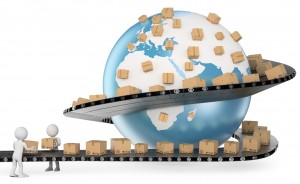A lot of time, money and resources are spent in research, development and manufacturing of top notch products to impress modern day consumers. Firms that were once fully in charge of all operations pertaining to their innovations are now focussing more on their “core competencies” (production) and opting to outsource other functions like distribution to other companies. These outsourced distribution companies dedicate their full attention to pushing volume into the market and inevitably attempt to convince their suppliers to reduce price to achieve their volume targets. In addition, sadly, this is a phenomenon taking place almost globally.
You can probably predict what happens next; a lower price means lower margins for the producer and sadly a top notch innovation is slowly changed into a faceless commodity.
Let’s use a make-believe ‘microscope’ and zoom further into this situation.
It would be highly unfair to blame this all on the outsourced distributors. They hardly (if ever) approach the producers to offer their services and most importantly, the outsourced distributor does not bear any responsibility for the brand’s identity, nor strategy nor creating loyalty in the market. Most distributors feel that their role should simply be, to collect the product and get it to its destination availing as much of it as possible should the uptake allow.
Interesting…well, let’s zoom in a little further into this relationship and observe its beginnings and the reason it exists.
So, firstly…why do companies use 3rd party distributors?
The 3rd party’s forte is the ground, where the ‘rubber meets the road’ and over the years they have managed to sharpen this specialty thus allowing them to have deep penetration even into the lowest tiers of the trade. They know which stores are an absolute must win for any FMCG product, and over time they have cultivated a rich and detailed universe of outlets/stores. They know which stores a product should be in and this makes them precious to any company looking to increase their presence in the market.
The Swahili people have a saying for this one: Baniani mbaya, kiatu chake dawa. It describes that interesting position one is put in when he/she perceives someone to be ‘bad’ but admits that that person also has something good that they need.
Therefore, if you are a company working with a 3rd party distributor don’t feel undone and throw your toys out of the pram just yet.
Create a plan to better your relationship with the distributor, you need to ensure that you meet in the middle so to speak. Set SMART targets and objectives for the distributor. SMART: Specific, Measurable, Achievable, Relevant, and Time-based goals. Ensure that quality and correct training is given to the distributor’s agents and that they do go work. And, more important than training them to do go good work is, supervision of that good work. And in return the distributor will work without crossing set lines and hopefully both parties will live happily ever after.
But, for your company that is new or just in its conception stage, I have a much more adventurous proposal for you to think about. It might be a little naive and undercooked but we’re just thinking here for now…no one’s doing anything we’re just thinking together.
Okay…
For me, the best way to maximise on the potential of an innovation/new product is to take it yourself and sell it directly to the consumer. With the advent of tools like enterprise software (and web based customer service/social media) that manage consumer data, customer interactions, business information and even automate sales this direct way of marketing becomes more possible.
Moreover, retail censuses from private companies are available for all manner of goods and this will help you know which stores to target and how to approach them…this, mostly at a fee of course.
This means that initially you will miss out on the big prize that lies in the mass market due to the shallow presence to begin with but; you will gain something bigger! You will have full control of distribution, you will give the brand the “face” it is meant to have and reduce the passive nature of handing products over that ‘commoditises’ them.
Sales and distribution is time consuming and expensive; but, by completely internalising this function, your product will be sold and distributed by people who share interest in the product and are vested to see its reputation retained. They will spend more time building consumer intimacy and loyalty, resulting in a stronger brand identity.
Growth will initially be slow but as time passes profitability will be higher, consumer satisfaction will increase and best of all you will enjoy the freedom of being in total control of all aspects of your innovations.
Patrick Gituma – Marketing Operations Executive


